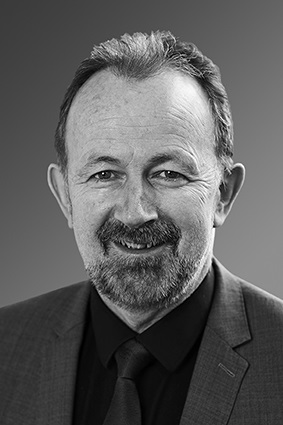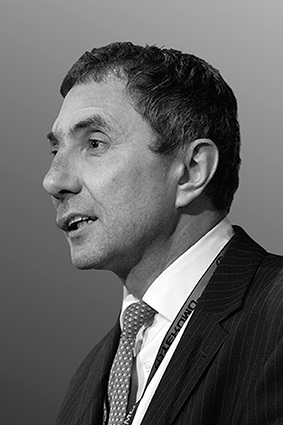Andreas Gruentzig Lecture :Darwin and Osler on the good ship IR sailing to Byzantium
Michael J. Lee graduated from medical school at University College Dublin in 1982 and completed three years of medical training, culminating in passing the boards in internal medicine in 1985. He successfully entered the Irish radiology training programme in 1985 and completed training in 1989. Certification of training was achieved by taking and passing the radiology boards in both Ireland (FFR RCSI) and the UK (FRCR). During his radiology training, he also completed an M.Sc. in Radiological Sciences, and published his first IR paper on lower limb angioplasty in the Irish Journal of Medical Science in 1988.
He completed fellowship training at the Massachusetts General Hospital in Boston from 1989 to 1991, and was promoted to staff for a further four years and as Assistant Professor at Harvard. He became very interested in research at MGH, publishing widely in the fields of IR and abdominal imaging. He returned to Ireland in 1995 as Professor of Radiology at the Medical School of the Royal College of Surgeons in Ireland and was appointed as Consultant Interventional Radiologist at Beaumont Hospital in Dublin.
Prof. Lee has held positions in many national and international societies. He was one of the original founders and first president of the Irish Society of Interventional Radiology, and has been president of the International Society of Hepato-Biliary and Pancreatic Diseases. He has held many positions in CIRSE, including the presidency from 2011-2013. He is also the secretary of the IR division at UEMS. He is on the editorial board of many journals, including CVIR, and is the European editor of Seminars in Interventional Radiology. He is a Fellow of both CIRSE and SIR and obtained the EBIR in 2010. He is an honorary fellow of the Chinese Society of Interventional Radiology (CSIR), the Interventional Radiology Society of Australasia (IRSA), the Hellenic Society of IR and the Czech Society of IR. During his tenure with CIRSE, he was instrumental in bringing the patient safety agenda into focus for the IR community, brought dedicated educationalist experience to the EBIR, and negotiated the acceptance of the EBIR and IR curriculum with both IRSA and RANZCR in Australia and New Zealand.
He has published widely on interventional radiology topics, with over 250 peer-reviewed publications and 80 chapters and reviews. He also co-edited the textbook Interventional Radiology: The Requisites, now in its second edition, and is series co-editor for six books on Techniques in Interventional Radiology.
His research interests are many and include endovascular intervention for peripheral arterial disease, foot perfusion studies pre- and post-angioplasty for BTK lesions, subintimal angioplasty, embolisation procedures to control haemorrhage, patient safety, enteral nutrition, IVC filters and venous thrombectomy for ilio-femoral DVT. He has received recognition for his research from RSNA, BSIR, ESGAR and CIRSE with differing awards. He received the Prix de L’APERR (L’Assoiation pour L’Etude et la Recherche en Radiologie) in 1986. He also received the Editor’s Medal for the best paper published in Clinical Radiology in 2008. He recently received the Gold Medal from CIRSE and the Gold Medal from the British Society of Interventional Radiology (BSIR).
He has given over 200 lectures all over the world on IR techniques and was chosen to give the eponymous Wattie Fletcher Lecture at BSIR and the Tesla Lecture at RCR. He has also introduced an eight-hour IR teaching curriculum into the RCSI Medical School four years ago. He recently published a book for medical students entitled Interventional Radiology for Medical Students, believing that early exposure to IR in medical school is vital to the continued vitality of IR. He is also a strong believer in clinical practice for IR.
Josef Roesch Lecture:Endovasular embolectomy for acute ischaemic stroke: an update
Antonin Krajina is currently Professor of Radiology and Chair of the Department of Radiology at the Charles University Hospital in Hradec Kralove, Czech Republic. He earned his medical degree in 1983, and completed his radiology residency under the leadership of Prof. Leo Steinhart at the Charles University Hospital in 1991. In 1989, after the Velvet Revolution in Czechoslovakia, he strived to train in interventional radiology outside his country to continue his experimental work on portal hypertension. In 1992, he completed his fellowship in interventional radiology under the supervision of Dr. Josef Roesch and Dr. Frederick S.Keller in the Charles Dotter Institute in Portland, Oregon. After this, he returned home and started to implement new techniques in interventional radiology at his hospital. |



